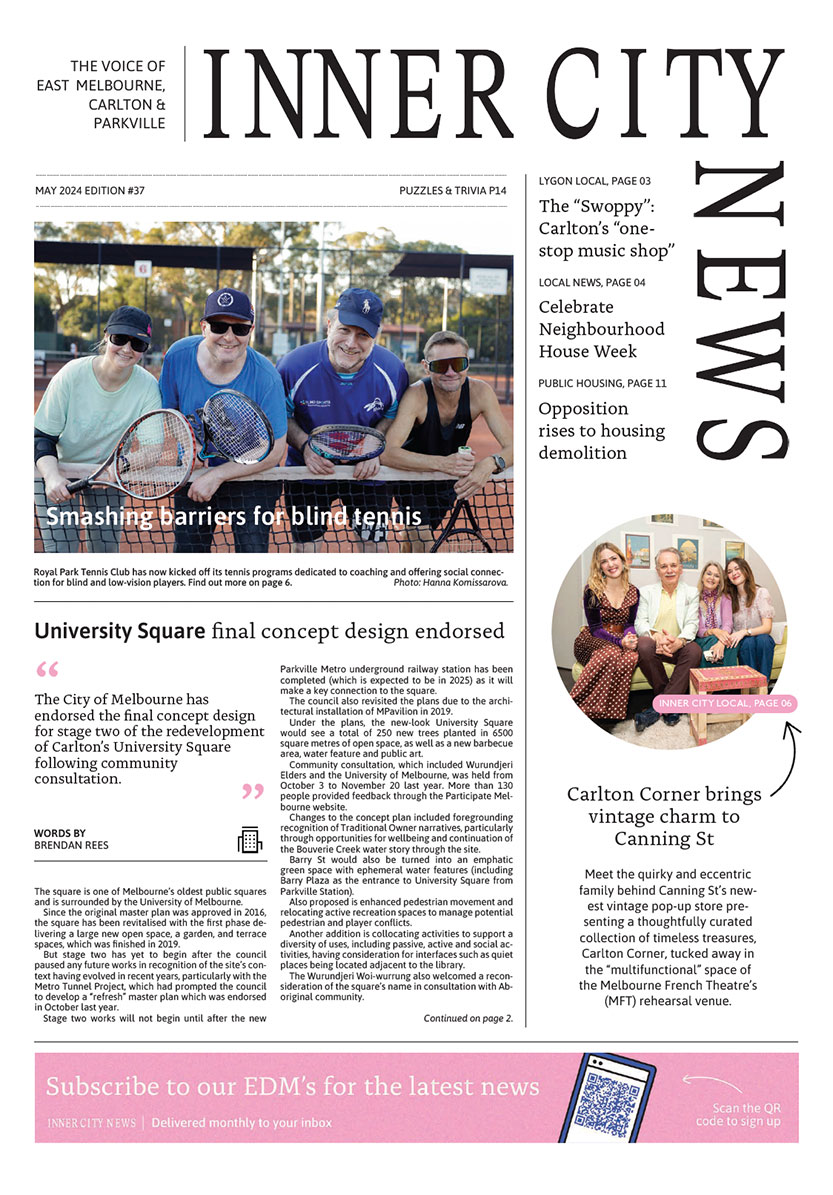Carlton’s new frog bog: hopping to improve biodiversity
Introducing our new frog bog!
In late July, following expert advice from Westgate Biodiversity, a group of volunteers from Quin House, a male residential detox facility, arrived to help dig the shallow hole that became our frog bog.
Our native water plants have been set to work to clean the pond and make a beautiful habitat for our insect and frog friends.
But what is a frog bog you might ask yourself? That was also my question when our farmer raised it with me.
A frog bog typically refers to a wetland or swampy area that serves as a habitat for frogs and other amphibians. These environments are characterised by their moist and muddy conditions, which are ideal for supporting various plant and animal species.
Frog bogs are essential ecosystems because they provide a safe breeding ground and shelter for frogs during various stages of their life cycle. They usually have a variety of vegetation, including aquatic plants and shrubs, which offer cover and food sources for the frogs. The presence of standing water or slow-moving water in a frog bog helps support the development of tadpoles.
These habitats are valuable to the broader ecosystem as well, as they can support a wide range of wildlife, including insects, birds, and small mammals that rely on the frogs as a food source. Nature can be cruel, but it’s the circle of life, as the Lion King cartoon taught us.
Creating a frog bog in an urban area can offer several benefits for both the local environment and the community:
- Biodiversity and habitat conservation: urban frog bogs create havens for local frog species, promoting biodiversity, ecological balance, and supporting wildlife.
- Educational and recreational opportunities: frog bogs serve as educational tools for learning about local ecosystems and wildlife.
- Air-quality improvement: frog bogs can capture and store carbon dioxide, mitigating climate change effects, and act as natural air purifiers, enhancing urban air-quality.
- Aesthetic and psychological benefits: urban green spaces, such as frog bogs, enhance aesthetics and contribute to residents’ mental well-being, reducing stress and improving overall health.
- Community engagement: building and maintaining frog bogs involve community-driven projects that foster ownership and stewardship among residents, encouraging conservation efforts.
- Pollination support: frogs and wetland creatures aid in pollination in urban gardens and green spaces, indirectly supporting local plant life and urban agriculture.
- Adaptation to climate change: urban frog bogs promote resilient ecosystems capable of withstanding extreme weather events and changing environmental conditions posed by climate change.
We’re really looking forward to our frog bog developing in the coming months and years. Come along to the Carlton Neighbourhood Learning Centre to check it out. Hop to it! •

University Square final concept design endorsed




 Download the Latest Edition
Download the Latest Edition